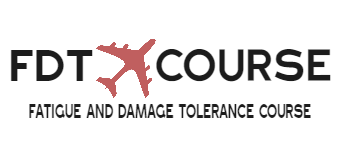Course Textbook:
Schijve, Jaap, Fatigue of Structures and Materials, Kluwer Academic Publishers, Second Edition, 2009.
Each participant is to purchase their own course textbook and review chapters 1-12 and 18 prior to attending the course to maximize the effectivity of the class time.
Course Includes:
- A course notebook prepared by your instructor
- Supplemental material to enhance the subject matter
- Refreshments served each morning and afternoon
Course Description & Outline:
This five-day course is designed to prepare participating engineers to meet the challenges of finding compliance to the Aging Aircraft Safety Rule (AASR) including the new Part 26 requirements, by providing fundamental knowledge of fatigue and fracture mechanics and the tools necessary to conduct accurate fatigue and damage tolerance analyses. Concepts of fatigue, fracture mechanics and damage tolerance in aerospace structures are presented. Subjects include the following: evolution of requirements for preventing fatigue damage, fatigue mechanism, stress concentrations, fatigue properties, fatigue strength, damage accumulation, stress intensity factor, crack growth, residual strength plus failure criterion, constant and variable amplitude loading, load spectra, inspection techniques. Analytical and numerical approaches to fatigue and damage tolerance in metallic structures is also discussed in detail.
Monday
- Introduction to Fatigue Mechanism: history, background, evolution of fatigue requirements and accidents lessons learned.
- Fatigue as a Phenomenon: crack nucleation, crack growth, fatigue failure.
Tuesday
- Design Considerations: stress concentration, eccentricity, hard point, residual stresses, surface treatment, computational tools.
- Fatigue properties: fatigue limits, S-N curves, fatigue diagrams, fatigue crack growth.
- Fatigue Strength: notched and un-notched specimens, S-N curves, Analytical prediction.
Wednesday
- Stress Intensity Factors: definition of K, Elastic crack tip stresses, Strain energy release rate G, relationship of G and K, computation techniques, applications.
- Fracture Mechanics: Griffith Theory, crack growth properties, fracture toughness, analytical prediction, crack tip plastic zone, plane stress and plane strain application.
Thursday
- Fatigue Damage Accumulation: crack growth, residual strength and failure analysis, fail safety, damage tolerance, safe life, inspections.
- Introduction to Non-destructive Inspection: inspection techniques, probability and reliability of inspections, inspection limitations.
- Application of computational mechanics: introduction to computation of stress concentration, stress intensity factor and failure analysis.
- Special Feature: introduction and demonstration of NASGRO and AFGROW computer tools.
Friday
- Fatigue Loads and Spectra: load spectra, variable amplitude loading in fatigue, variable amplitude loading in crack growth, effects of load history.
- Fatigue and Failure of Joints and Structure: fastened structures and stiffened structures.
- Damage Tolerance of Repairs and Alteration: introduction, discussion and guidelines of methods, computer software, examples-antenna installations.
- Supplemental Topics: lessons learned from accidents, analytical and numerical methods to fatigue and damage tolerance analysis, case studies, workout examples of repairs and alterations.
